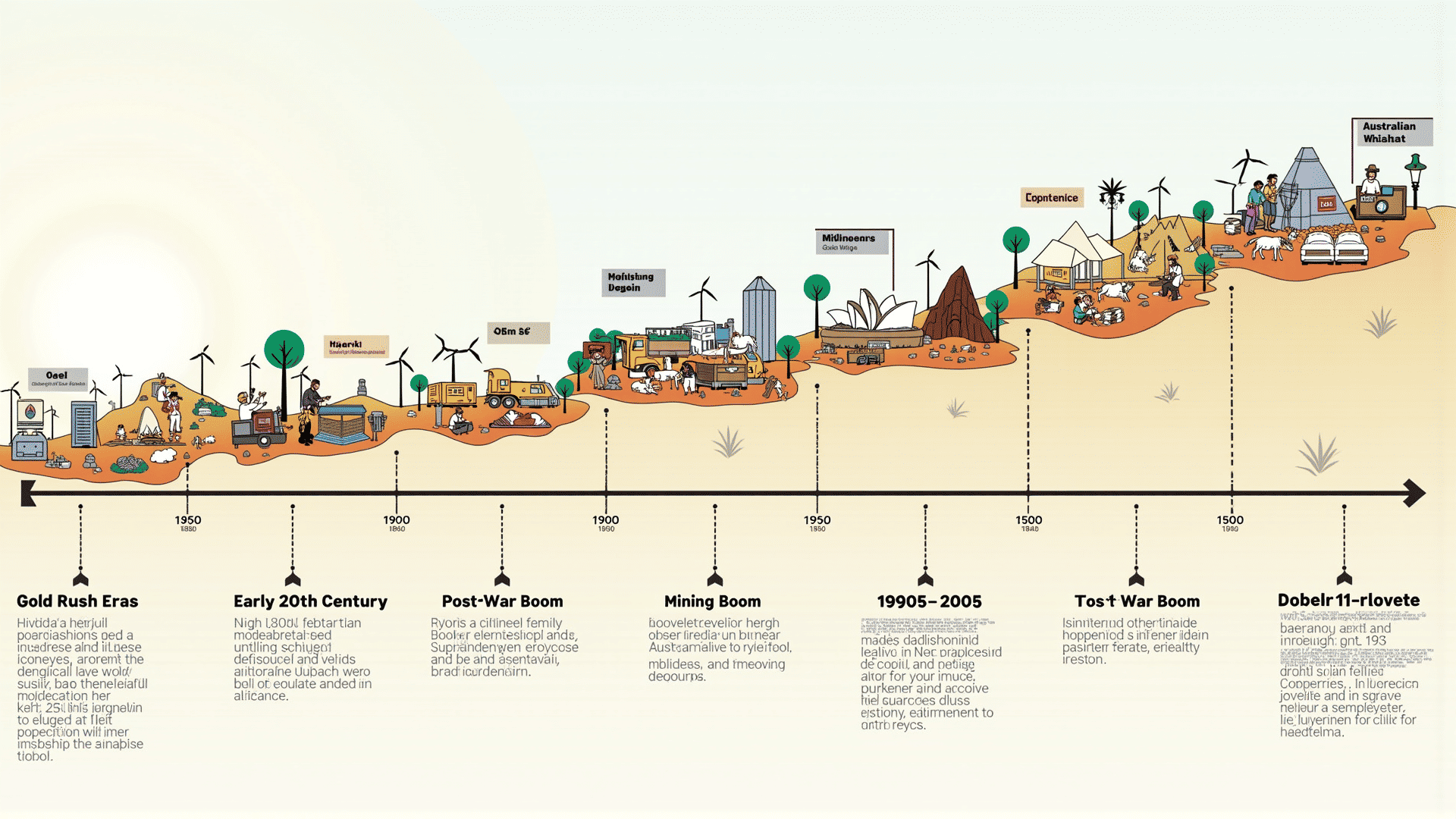Australia's journey in asset allocation and resource utilization offers a fascinating narrative marked by several pivotal moments that have profoundly influenced its modern structure. This exploration of Australia's past in the business realm outlines significant milestones and developments that have shaped its path.
Early Beginnings and Gold Rush
The origins of asset allocation in Australia can be traced back to the 19th century, a period characterized by the discovery of gold. The Gold Rush, which commenced in the 1850s, served as a catalyst for economic growth, drawing individuals from around the world seeking fortune. This surge not only boosted immigration but also spurred infrastructure development and the establishment of local markets and trade systems.
The Emergence of the Stock Exchange
As the economy expanded, Australia recognized the necessity for structured platforms to facilitate the buying and selling of company shares. This led to the founding of various stock exchanges across the nation in the late 19th and early 20th centuries, with the Sydney Stock Exchange and Melbourne Stock Exchange playing pivotal roles. These institutions paved the way for more organized and efficient channels for asset transactions.
Post-war Boom and Diversification
The mid-20th century saw Australia experience significant industrial growth following the end of World War II. This era ushered in diversification as agriculture, mining, and manufacturing sectors expanded. Australia's vast reserves of natural resources, such as iron ore and coal, became key components of its export economy. These developments led many individuals and international entities to direct their resources into local industries, sparking waves of economic activity and innovation.
The 1980s Deregulation
Entering the 1980s, Australia began a period of economic reform under the leadership of Prime Minister Bob Hawke and Treasurer Paul Keating. Marked by the deregulation of the banking sector and the floating of the Australian dollar, these changes opened Australia to global markets. The aftermath of these reforms resulted in increased international engagement and integration into the global economic system.
Technology and Modernization
The advancements of the late 20th and early 21st centuries were characterized by technological progress and digitization. New platforms emerged that revolutionized traditional practices, offering accessible avenues and real-time data for individuals and companies alike. Additionally, superannuation reforms mandated employer contributions, ensuring that Australians systematically accumulated savings, significantly impacting the country's economic resilience.
Sustainable Practices and Future Directions
Today, sustainable practices are at the forefront of discourse in Australia. Environmental concerns and social responsibilities drive new considerations and strategies. The push towards renewable resources and technologies reflects a global shift towards sustainable practices, impacting decisions and highlighting the need for adaptability.
In summary, Australia's trajectory in the realm of resource allocation and utilization is a testament to its adaptability and innovation. From the gold rush to contemporary technological advances, each phase in its history reveals strategic responses to its economic landscapes. As global and local challenges continue to emerge, Australia remains poised to navigate its future with resilience and foresight.
